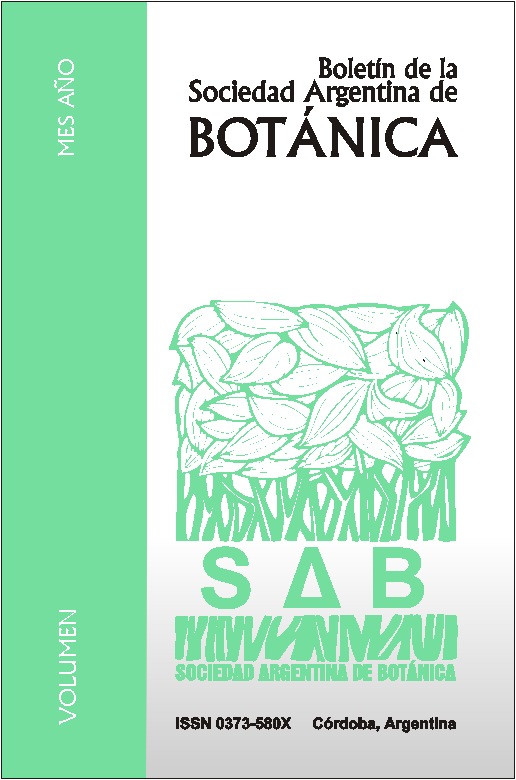Pollen morphology of Staelia s.l. (Rubiaceae).
DOI:
https://doi.org/10.31055/1851.2372.v49.n1.7821Keywords:
Anthospermopsis, multiaperturate, Planaltina, pollen, Spermacoceae, Tessiera.Abstract
Pollen morphology of Staelia s.l. (Rubiaceae). This paper deals the study of the pollen grains of Staelia s.l. Currently, it have been studied only four of 25 species of this taxon. We carried out an analysis of the pollen morphology of all species belonging to the four genera of Staelia s.l.: Anthospermopsis, Planaltina, Tessiera and Staelia s.s. As result, we found a remarkable homogeneity of pollinic characters within each genus, which is evidenced in a single pollen type for each taxon, except for Anthospermopsis. Tessiera and Planaltina are differentiated from Staelia by the pollen size (P=42-75, E=50-78.4 vs. P=21-34, E=20-30.8 µm) and length of colpi (LC/P= 0.22-0.31 vs. LC/P=0.57-0.77 µm), whereas the pollen of Anthospermopsis is virtually indistinguishable from the remaining species of Staelia. Furthermore, the three pollen types are very similar to those stated for African and Australian Spermacoce species. The pollinic type of Staelia is also shared with the monospecific genus Emmeorhiza. For these reasons, we proposed to extend the classification of the pollen types previously described for Borreria and Spermacoce (designated by Arabic numbers, 1-20) to the genera studied here. The pollen grains are described and illustrated by images of scanning electron microscope. The lower surface of the nexine is described through broken grains.Downloads
Downloads
How to Cite
Issue
Section
License
Provides immediate and free OPEN ACCESS to its content under the principle of making research freely available to the public, which fosters a greater exchange of global knowledge, allowing authors to maintain their copyright without restrictions.
Material published in Bol. Soc. Argent. Bot. is distributed under a Creative Commons Attribution-NonCommercial-ShareAlike 4.0 International license.









